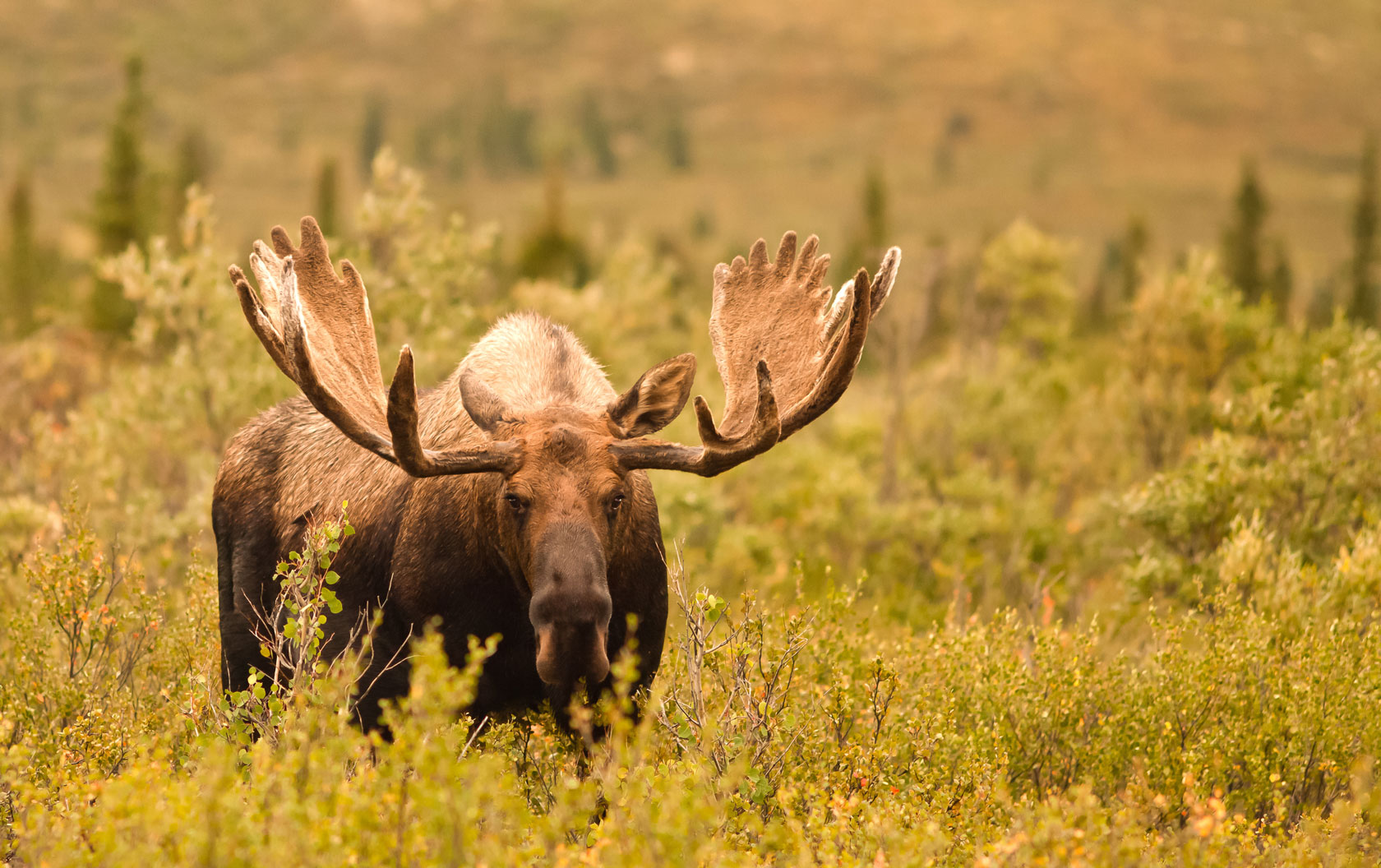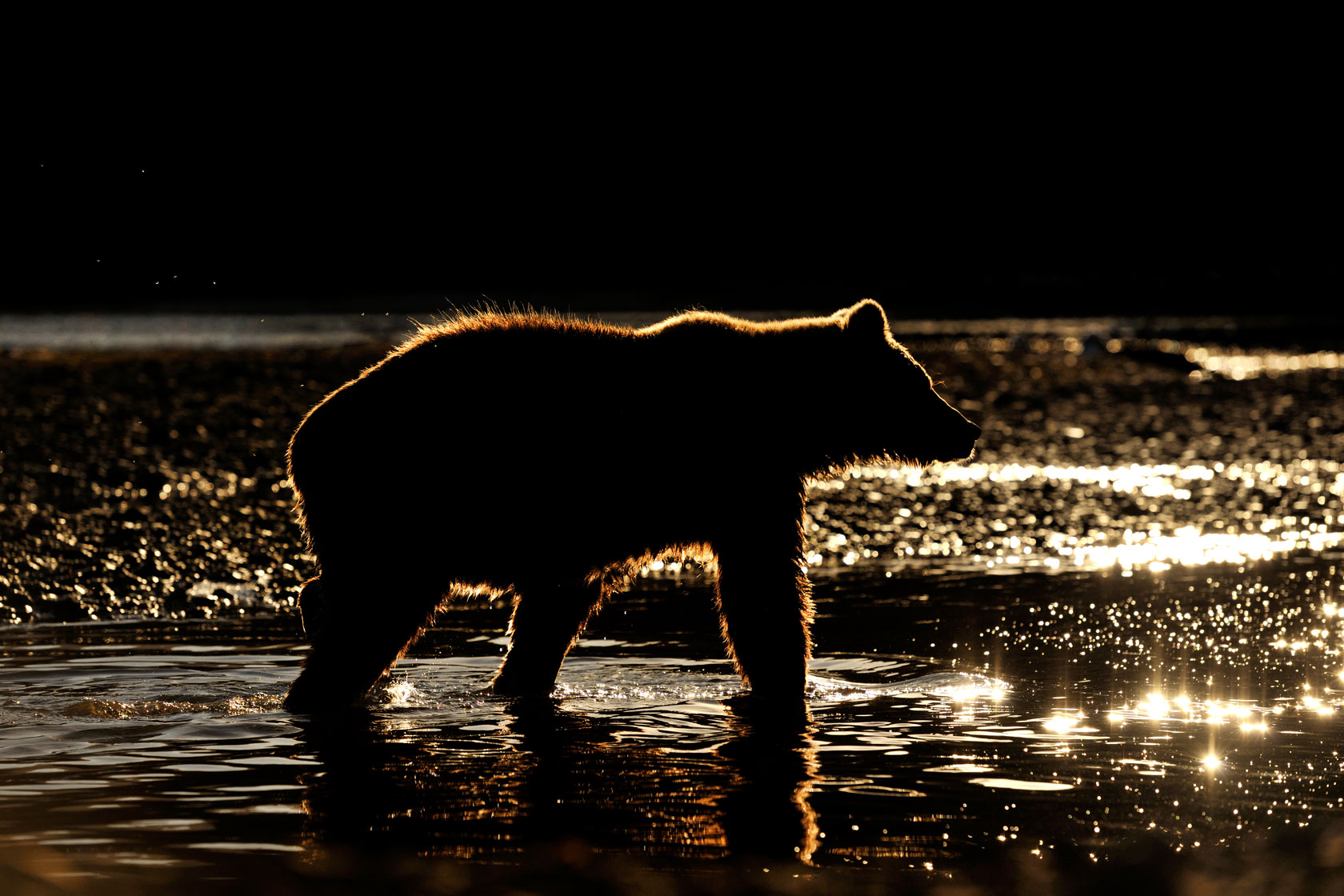And why you’ll want to see them on a Seabourn voyage.
Famed naturalist, explorer, and conservationist John Muir said it best: “To the lover of wilderness, Alaska is one of the most wonderful countries in the world.” And fortunately, although nearly 150 years have passed since Muir first visited the land that would later become America’s 49th state, his maxim from Travels in Alaska endures. Today’s travelers to the Great Land still find pristine seaways, old-growth forests, and endless mountain ranges that shelter a beautiful abundance of wildlife, including some 100 mammals and 500 bird species. Bonus: Seabourn guests get to experience this wildlife with an eco-minded world-class Expedition Team comprising expert kayak guides, geologists, ornithologists, photographers, marine biologists, and naturalists. Join them on guided Ventures by Seabourn® excursions to explore the region up-close cruising in a Zodiac®, kayaking in Endicott Arm, observing bears on a Wrangell photo safari, or simply gazing out at Glacier Bay aboard your ship, here’s a look at some of the most wonderful Alaska wildlife you’re likely to spy while sailing in Alaska.
Humpback Whales Watching whales swimming in Alaska waters can be a soul-stirring experience. Just ask John Muir, who wrote: “But think of the hearts of these whales, beating warm against the sea, day and night, through dark and light, on and on for centuries; how the red blood must rush and gurgle in and out, bucketfuls, barrelfuls at a beat!” Humpbacks are known to make frequent appearances in places such as Point Adolphus and the Inian Islands – imagine the thrill of seeing one from your Zodiac. Also look for: orcas (aka “killer whales” that live and hunt in pods).
Brown Bears One of Alaska’s top predators, the brown bear (those that live inland are called grizzlies) also makes for top wildlife sightings – from a secure distance, of course. Omnivores at heart, brown bears are famously unfinicky when it comes to eating, but feasting on salmon in fishing spots such as the Chilkoot River in Haines – setting for Seabourn’s must-do bear and eagle quest – is among their favorite meals. Also look for: black bears (the smallest and most abundant of Alaska’s four ursine species) and wolves (listen to them howl during an excursion to the Kroschel Wildlife Center near Haines).
Moose Alaska’s state land mammal, the moose claims bragging rights as the largest member of the deer family, standing up to eight feet tall and weighing as much as 1,500 pounds. Fun fact: Though moose are often seen standing still and striking meditative poses, they can run up to 35 miles per hour. Not so fun fact: The moose’s size and speed (and don’t forget males’ antlers, which can measure up to six feet), coupled with their notoriously cantankerous moods, make it one of Alaska’s most-dangerous animals. Translation: Spotting moose in the wild makes for a memorable moment on a Seabourn photo safari, just remember to pack your telephoto lens. Also look for: caribou (both males and females grow antlers, a singularity among deer species) and Sitka black-tailed deer, native to southeast Alaska’s coastal rain forests.
Salmon Chinook, chum, pink, sockeye, and coho comprise Alaska’s five species of salmon, which return from the sea each summer to spawn in rivers and streams. Guided fishing excursions are high on many travelers’ wish lists – later, Seabourn chefs can even prepare your catch for dinner – though visits to the traditional Klukwan village near Haines and Ketchikan’s Totem Heritage Center to learn about the significance of salmon to Indigenous cultures is also time well spent. Also look for: Arctic char along with rainbow and cutthroat trout (typically also at their peak from June through September).
Bald Eagles The Last Frontier ranks first in the U.S. for bald eagle numbers (an estimated 30,000 call the state home). Mighty and majestic, these birds of prey make for unforgettable sightings – especially from your kayak in Misty Fjords or catamaran in Tracy Arm Fjord – unless you’re a fish: Bald eagles possess exceptional eyesight plus two-inch-long talons and can dive at speeds of up to 100 mph. Also look for: golden eagles (spot them by the golden plumage on their neck and crown) plus horned and tufted puffins (allow some time while watching them dive for fish – these seabirds, easily identified by their colorful beaks, can descend to depths of nearly 200 feet).
Sea Otters No-one would blame you if you devoted hours to watching these charismatic creatures snacking on sea urchins in shallow coastal waters, or simply taking a floating snooze while tethered to kelp to keep from drifting away. Highly recommended while in Sitka: Seabourn’s naturalist-led Sea Otter & Wildlife Quest to learn about the animal’s rebound after being decimated by fur hunters in the early 1800s. Also look for: river otters, martens, and mink, fellow furry members of the weasel family, on forest hikes and photo safaris.
Mountain Goats Mountain goats widely roam the mountain ranges of southeast Alaska but keep those high-powered binoculars at the ready. Up-close sightings are rare, given their tendency to stick to higher elevations, where they feed on lichen and mosses while keeping a healthy distance from predators such as bears and wolves. Scan the slopes for their white, woolly coats and shaggy beards that contrast with their long black horns. Also look for: Dall sheep – Alaska’s only other all-white, hoofed large mammals – are often confused with mountain goats but prefer to frequent drier inland destinations such as Denali National Park.
Harbor Seals Once hunted to the brink of extinction for their pelts, harbor seals now abound in Alaska’s waters, in part thanks to 1972’s pivotal Marine Mammal Protection Act. Look for them swimming and diving for salmon, squid, and other daily catches during kayaking excursions in places like the nutrient-rich waters by Hubbard Glacier, but pack some patience: Although they’re mammals, harbor seals can hold their breath underwater for up to 20 minutes. Also look for: Steller sea lions, the largest member of the eared seals with males being up to 11 feet long and weighing as much as 2,500 pounds. Frequently seen sunbathing in large congregations on rookeries, they differ from other seals not only by using support from their front flippers to pull their legs to walk but also by their distinct roar. They can be found, along with gregarious Pacific white-side dolphins, in places such as Kenai Fjords and Glacier Bay National Park.
Ready to go wild in style? Seabourn’s range of Alaska ultra-luxury voyages bring you the best of the Great Land by combining immersive cultural and wildlife experiences with uncompromising comfort – think gourmet dining, personal Suite Hosts and Suite Attendants, illuminating lectures, and holistic spa treatments.
Consider these upcoming voyages:
15-Day Alaska Fjords, Canadian Inside Passage & Glacier Bay
ROUNDTRIP: Vancouver, B.C., CA
May 14, 2026
from $9,179*
Explore Itinerary*Per Person, USD. Taxes and Fees are included. Additional terms apply.
7-Day Alaska Inside Passage & Glacier Bay
DEPARTS: Vancouver, B.C., CA
ARRIVES: Juneau, Alaska, US
May 14, 2027
from $4,844*
Explore Itinerary*Per Person, USD. Taxes and Fees are included. Additional terms apply.
14-Day Glacier Bay, Fjords & Inside Passage
ROUNDTRIP: Vancouver, B.C., CA
May 14, 2027
from $8,584*
Explore Itinerary*Per Person, USD. Taxes and Fees are included. Additional terms apply.
7-Day Alaska Fjords, Canadian Inside Passage & Glacier Bay
DEPARTS: Juneau, Alaska, US
ARRIVES: Vancouver, B.C., CA
May 21, 2027
from $4,674*
Explore Itinerary*Per Person, USD. Taxes and Fees are included. Additional terms apply.



Consider these upcoming voyages:
15-Day Alaska Fjords, Canadian Inside Passage & Glacier Bay
ROUNDTRIP: Vancouver, B.C., CA
May 14, 2026
from $9,179*
Explore Itinerary*Per Person, USD. Taxes and Fees are included. Additional terms apply.
7-Day Alaska Inside Passage & Glacier Bay
DEPARTS: Vancouver, B.C., CA
ARRIVES: Juneau, Alaska, US
May 14, 2027
from $4,844*
Explore Itinerary*Per Person, USD. Taxes and Fees are included. Additional terms apply.
14-Day Glacier Bay, Fjords & Inside Passage
ROUNDTRIP: Vancouver, B.C., CA
May 14, 2027
from $8,584*
Explore Itinerary*Per Person, USD. Taxes and Fees are included. Additional terms apply.
7-Day Alaska Fjords, Canadian Inside Passage & Glacier Bay
DEPARTS: Juneau, Alaska, US
ARRIVES: Vancouver, B.C., CA
May 21, 2027
from $4,674*
Explore Itinerary*Per Person, USD. Taxes and Fees are included. Additional terms apply.
Traverse the fabled sea corridor on a High Arctic expedition with Seabourn.
Written by Rory Martin
Besides proximity to the natural wonders Alaska’s known for, this city also affords visitors the opportunity to immerse themselves in local culture and history.
Must-haves to keep you comfortable throughout your big adventure

